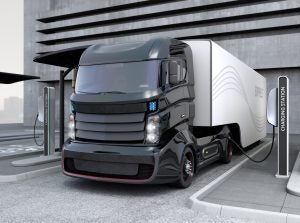 By Michael Colvin and Larissa Koehler
By Michael Colvin and Larissa Koehler
Last month California took another significant step forward in advancing the deployment of zero-emission vehicles, with the adoption of a Transportation Electrification Framework by the state’s Public Utilities Commission. The framework establishes a $1 billion, 5-year suite of programs, and it provides a pathway for the state’s large electric utilities to continue to build on what is far and away the most successful deployment of electric vehicles in the country.
California has half of the electric vehicles currently operating in the United States — and that is no accident. Strong and consistent policy got us there. Perhaps most exciting, the state is ensuring that the rollout of these zero-emission vehicles is done in an equitable way.
California paves the way to an electric vehicle future with new electrification framework Share on XCalifornia recognizes the critical benefits that come from a transition to zero-emission vehicles — including significant reduction in emissions that harm air quality, human health and climate, as well as cost savings over the lifetime of the vehicle and a positive impact on the state’s economy with a host of well-paying jobs throughout the transportation sector coming to the state.
The trajectory of electric vehicle sales in the state will only continue to grow. California recognizes that it sets an example for other states with clearly demonstrated commitment to a zero-emission vehicle future. This includes policies such as Advanced Clean Cars II, which will phase out the sale of new internal combustion engine passenger vehicles by 2035, the Advanced Clean Fleets rule, which sets increasing targets for sales of zero-emission trucks and school buses, guided by Gov. Newsom’s executive order recognizing the key strategic role to decarbonizing this part of the economy.
Electric utilities will play a critical role by installing the charging stations and necessary infrastructure. Of course, as utilities start to design how to structure their rebate programs under this newly adopted framework, several important points must be kept in mind.
Prioritize deployment of zero-emission trucks and buses
As a more nascent market than passenger vehicles, additional public investment will likely be necessary for ZEV trucks and buses. Prioritizing public investment in these vehicles advances equity; given that trucks and buses are the dirtiest vehicles on California’s roads, and they tend to be concentrated in local hot spots, adversely affecting already pollution-burdened communities near freight corridors and truck attracting facilities. The newly adopted framework and utility programs will be a necessary complement to the Advanced Clean Trucks rule and the pending Advanced Clean Fleets rule.
Ensure equitable programs
The framework adopted the laudable target for 65% of funds to be used in a way that benefits disadvantaged communities. As always, the devil will be in the details. Structuring a rebate program that fails to incorporate recommendations from communities disproportionately breathing dirty air from pollution as to how to effectively disseminate rebates is a non-starter. The California Public Utilities Commission should ensure through robust metrics and analytics that there is effective and ongoing outreach to affected communities.
Facilitate effective vehicle-grid integration
Electric vehicles can function as batteries on wheels. This has a great potential, and the state will need to do more work to unlock the promise of this potential. Doing so will both minimize the need for grid buildout and support renewable energy targets. By successfully utilizing and compensating vehicle batteries, including load management and bidirectional power sharing, utilities can help minimize the need for additional fossil-fuel-powered generation and expensive fixed storage.
California is serious about the transition to zero-emission vehicles. Alongside other state and federal funding opportunities, the framework can help provide key investments in necessary charging infrastructure. California is continuing to pave the way for other states; the framework is one more flagstone in the path to a zero-emission transportation future for all Californians.









